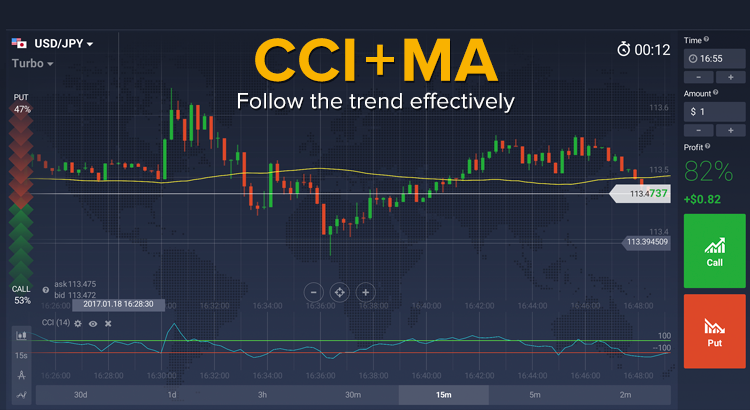
In summary, a function that has a derivative is continuous, but there are continuous functions that do not have a derivative. Since OTC derivatives are private transactions, they are not regulated by the Securities and Exchange Commission (SEC), increasing the possibility of default. Forwards are not typically suitable for the average investor since they are unregulated and are more at risk of default. Derivatives today are based on a wide variety of transactions and have many more uses.
What is a Derivative? Definition Simply Explained – Finbold – Finance in Bold
What is a Derivative? Definition Simply Explained.
Posted: Wed, 08 Jun 2022 07:00:00 GMT [source]
The above examples show us that derivatives provide an efficient method for end-users to better hedge and manage their exposures to fluctuation in the market price/rates. The risks faced by derivative dealers depend on the actual strategy the dealer adopts. The above examples explain how hedging protects the hedger from unfavorable price movements while allowing continued participation in favorable movements. The above examples clarify that derivative is distinctly more complex than traditional financial instruments, such as stocks, bonds, loans, bank deposits, etc. Contrary to a future, a forward or an option, the notional amount is usually not exchanged between counterparties.
What is your current financial priority?
If both parties in a futures contract are speculating investors or traders, it is unlikely that either of them would want to make arrangements for the delivery of a large number of barrels of crude oil. Speculators can end their obligation to purchase or deliver the underlying commodity by closing (unwinding) their contract before expiration with an offsetting contract. A futures contract, or simply futures, is an agreement between two parties for the purchase and delivery of an asset at an agreed-upon price at a future date. Traders use a futures contract to hedge their risk or speculate on the price of an underlying asset.
Derivatives can be used to hedge a position, speculate on the directional movement of an underlying asset, or give leverage to holdings. These assets are commonly traded on exchanges or OTC and are purchased through brokerages. The Chicago Mercantile Exchange (CME) is among the world’s largest derivatives exchanges. For example, the emergence of the first futures contracts can be traced back to the second millennium BC in Mesopotamia. The introduction of new valuation techniques sparked the rapid development of the derivatives market. For derivatives, leverage refers to the opportunity to control a sizable contract value with a relatively small amount of money.
Market and arbitrage-free prices
Given the bespoke nature of forward contracts, they tend to be generally held until the expiry and delivered into, rather than be unwound. We compute the desired derivative by just substituting the function of interest into the formal definition of the derivative. Here h is a vector in Rn, so the norm in the denominator is the standard length on Rn. However, f′(a)h is a vector in Rm, and the norm in the numerator is the standard length on Rm. If v is a vector starting at a, then f ′(a)v is called the pushforward of v by f and is sometimes written f∗v. Because the limit of a function tends to zero if and only if the limit of the absolute value of the function tends to zero.
- If interest rates fall so that the variable rate on the original loan is now 5%, Company XYZ will have to pay Company QRS the 2 percentage-point difference on the loan.
- Futures derivatives are traded on an exchange, with standardised contracts.
- The use of derivatives to hedge risk or improve returns has been around for generations, particularly in the farming industry.
- Hedging a position is usually done to protect or insure against the adverse price movement risk of an asset.
- The offsetting transactions can be performed in a matter of seconds without needing any negotiations, making exchange-traded derivatives instruments significantly more liquid.
By making it easier for people to enter and exit positions, derivatives help create a much more liquid market. It ultimately leads to lower transaction costs and better pricing power for traders. Swaps involve two parties exchanging cash flows on agreed-upon dates throughout the contract.
Disadvantage of exchange-traded derivatives
However, a forward is not traded on an exchange and thus does not have the interim partial payments due to marking to market. Unlike an option, both parties of a futures contract must fulfill the contract on the delivery date. The seller delivers the underlying asset to the buyer, or, if it is a cash-settled futures contract, then cash is transferred from the futures trader who sustained a loss to the one who made a profit. To exit the commitment prior to the settlement date, the holder of a futures position can close out its contract obligations by taking the opposite position on another futures contract on the same asset and settlement date. A closely related contract is a futures contract; they differ in certain respects.
Google Adds Derivatives, Integrals & Limits Examples To Math … – Search Engine Roundtable
Google Adds Derivatives, Integrals & Limits Examples To Math ….
Posted: Tue, 13 Jun 2023 07:00:00 GMT [source]
Derivatives are often used to hedge positions, give leverage, or speculate on the asset’s movements. While they were originally intended to help balance exchange rates, you’ll now find them based on everything from weather data to the price of grapes. A derivative is a financial security whose value is derived from an underlying asset. Underlying assets can be equity, index, foreign exchange, commodity, or other assets. Stock warrants normally trade on an exchange but volume can be low, generating liquidity risk.
Vanilla versus Exotic Derivatives
Futures contracts are traded on the exchange market and as such, they tend to be highly liquid, intermediated and regulated by the exchange. If n and m are both one, then the derivative f ′(a) is a number and the expression f ′(a)v is the product of two numbers. If it were a number, then f ′(a)v would be a vector in Rn while the other terms would be vectors in Rm, and therefore the formula would not make sense. For the linear approximation formula to make sense, f ′(a) must be a function that sends vectors in Rn to vectors in Rm, and f ′(a)v must denote this function evaluated at v.

On the real line, every polynomial function is infinitely differentiable. By standard differentiation rules, if a polynomial of degree n is differentiated n times, then it becomes a constant function. The derivative of a function of a single variable at a chosen input value, when it exists, is the slope of the tangent line to the graph of the function at that point. The tangent line is the best linear approximation of the function near that input value. For this reason, the derivative is often described as the «instantaneous rate of change», the ratio of the instantaneous change in the dependent variable to that of the independent variable. Depending on the derivative, it’s usually bought and sold either on a centralized exchange or through the over-the-counter (OTC) market.
Derivatives are used to protect from risk through hedging, to speculate on future prices, and to leverage investments. Derivative contracts are used to profit from an underlying asset’s price movements without actually owning the particular asset. Assume the stock falls in value to $40 per share by expiration and the put option buyer decides to exercise their option and sell the stock for the original strike price of $50 per share. If the put option cost the investor $200 to purchase, then they have only lost the cost of the option because the strike price was equal to the price of the stock when they originally bought the put. A strategy like this is called a protective put because it hedges the stock’s downside risk.
- This investor could buy a call option that gives them the right to buy the stock for $50 before or at expiration.
- Hence, forwards are customizable since both parties negotiate the contract terms.
- On the other hand, there is also risk involved with derivative trading.
- Derivatives can be bought or sold over-the-counter (OTC) or on an exchange.
Exchange-traded derivatives are standardized and more heavily regulated than those that are traded over-the-counter. Since John owns a portfolio, he will gain the money due to a rise in the market by 5%, but since https://1investing.in/ John is short in futures (Sold Futures), he will lose. Fund managers can buy an entire index like the S&P 500, picking up shares in each component and adjusting the portfolio whenever the index changes.
As such, they often require collateral or creditworthiness evaluations to ensure that both parties can meet their contractual obligations. These contracts involve specific terms and conditions negotiated by both parties, allowing them customization. Swaps can be very risky since they are OTC and unregulated by governments.
Derivatives
Counterparty risks are a type of credit risk in that the parties may not be able to live up to the obligations outlined in the contract. If one party becomes insolvent, the other party may have in bayes theorem unconditional probability is called as evidence no recourse and could lose the value of its position. A speculator who expects the euro to appreciate versus the dollar could profit by using a derivative that rises in value with the euro.

In contrast, over-the-counter derivatives are traded privately and are tailored to meet the needs of each party, making them less transparent and much more difficult to unwind. Derivatives are financial contracts whose value is linked to the value of an underlying asset. They are complex financial instruments that are used for various purposes, including speculation, hedging and getting access to additional assets or markets. The derivative of a function can, in principle, be computed from the definition by considering the difference quotient, and computing its limit. In practice, once the derivatives of a few simple functions are known, the derivatives of other functions are more easily computed using rules for obtaining derivatives of more complicated functions from simpler ones. Derivative investments are investments that are derived, or created, from an underlying asset.
